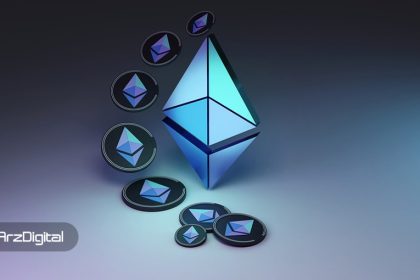After successfully updating Marj, Ethereum faced two big problems; Censorship of transactions and movement towards centralization. These problems finally made Vitalik Buterin add a new stage to the road map of this network. A step that aims to improve censorship resistance and decentralize the Ethereum network.
According to Cointelegraph, Buterin introduced a 6-part roadmap with a new part called The Scourge in a Twitter post on November 5 (November 14).
After changing the network consensus mechanism to Proof of Stake (PoS) on September 15, Ethereum entered the second stage called The Surge. The goal of this stage is to achieve the ability to process 100,000 transactions per second using rollup technology.
The current updated roadmap sees the Eskurge as the third stage, ahead of the previously known stages, The Verge, The Purge, and The Splurge.
According to the Ethereum roadmap, the purpose of the escrow phase is to ensure the acceptance of reliable and impartial transactions and to prevent centralization and other risks related to the protocol, including the “MEV” debate.
As miners have previously been accused of abusing Ethereum network transactions for their own benefit, Ethereum’s founder is looking to create a more neutral consensus layer on the network.
Vitalik Buterin had previously described a completely neutral mechanism as one that does not discriminate against the gains or losses of certain individuals.
A miner’s mineable value (MEV) is created when a miner outranks other miners in the network by deciding which transactions are included in a block and in what order.
This allows miners to select offers with higher fees from Mempool and process their transactions before arbitrage traders or anyone trying to make a profit.
As a result, Ethereum experienced more censorship and concentration on the network after the Marj update.
Following the change of the network mechanism to the proof-of-stake model, the rate of blocks that comply with US sanctions laws reached 73% on November 3 (November 12); A number that many people think is very high.
Anthony Sassano, an Ethereum investor and the founder of “Daily Gwei”, said in a Twitter post on October 15 (October 23) that resistance to censorship is more important than scalability in the current situation.
He wrote about it:
Ethereum protocol updates in order of importance in the next 6-12 months:
Withdrawal (staked Ethereum) from China Beacon
Updates to PBS and crLists related to censorship resistance
Proto-Denk Sharding Proposal (EIP-4844)Only in this humble servant’s opinion, censorship resistance is more important than scalability.
Anthony Sassano’s tweet
While the details of the escrow phase are still unclear, Ethereum’s founder has recently proposed a “Partial Block Auction” solution, whereby the block creator only has the right to decide on some of the block’s contents.
Other proposals have been made to combat censorship in Ethereum’s consensus layer; Like a solution from Ethereum R&D company Flashbots called “Unified Auctions for Allocation of Value” (SUAVE).
Also, Butrin confirmed an update to Verge, which will include the addition of Snark (Snark) technology to the Ethereum network.
Read more: Fast and cheap transactions; What are the solutions of the second layer of Ethereum?
The addition of Snark adds much-needed privacy features to the Ethereum network while allowing anonymous transaction tracking.
In addition, Buterin noted that a more explicit role for post-quantum cryptography (Quantum-Proofness) will be implemented at various stages of Ethereum’s roadmap as an essential component of the “endgame” protocol.
RCO NEWS


















